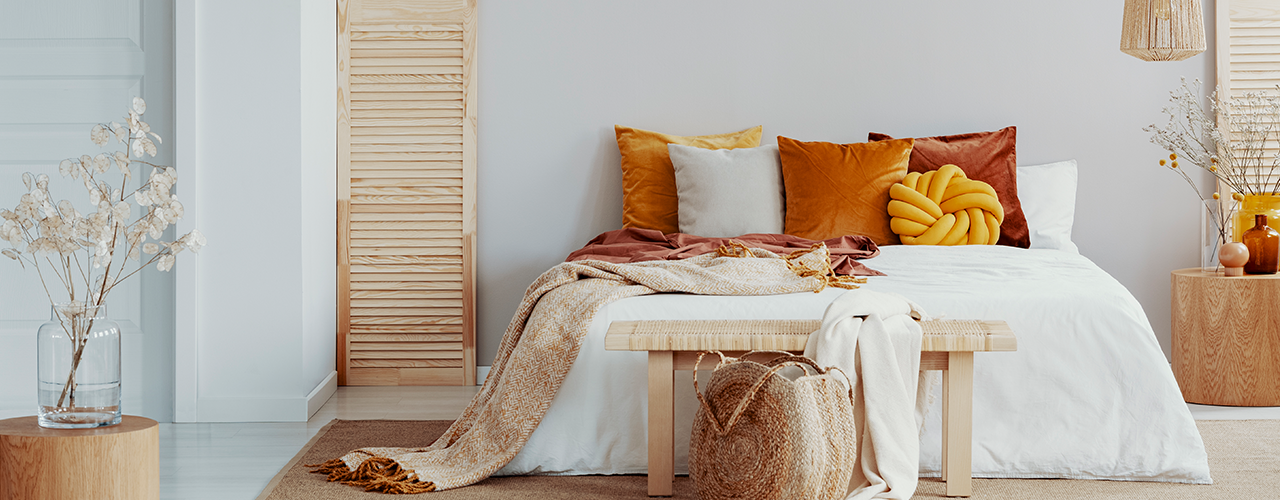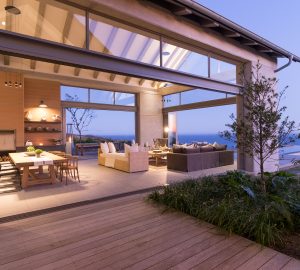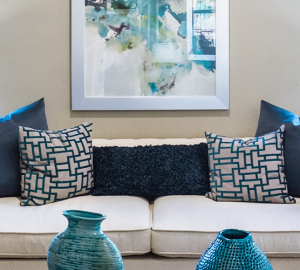Home, in living colour
Find out how a splash of colour can enhance a room, and your mood
Friday 29th of May 2020
Our homes are our sanctuary. They provide a safe place where we can be productive and creative.
As we spend so much time in our homes, it’s important to create spaces that enhance our mood and stimulate creativity. An easy way to do this is by introducing colour to the parts of the home where we work, play or sleep.
Colour prompts the brain to release different chemicals, which have in turn affect our moods and reactions to stimulus. Our colour choices also reflect our personalities.
To get the most out of your living space, consider adding an accent wall or a striking rug and a dramatic set of blinds, or simply scatter a few cushions in vivid colours. Just be mindful that too many hues could make a room appear cluttered. Limit your palette to three or four to maximise the impact.
Colour choices to enhance your home
Red is associated with high energy and power. It also promotes alertness and a connection to the physical self.
As it is quite a powerful colour, red is often best used as an accent colour. While not ideal for bedrooms, as it generates excitement, red works well in an office space or as a pop of colour in the kitchen.
Orange is warm and playful.
This is an ideal colour for spaces where people gather – such as a living room or dining room. It would also work well in a space where the family exercises.
Yellow promotes creative thinking and positivity. It also transforms a room into an inviting space.
It’s been said that yellow is a good hue if your work involves lots of reading, so consider some yellow accents if you are decorating your home office. Be careful of using too much yellow, as studies have shown it can also lead to feelings of irritability. Well-placed cushions in cheerful Tuscan sun or pineapple hues, or sunflowers in an entrance way, would have the desired mood-boosting effect.
Green has many positive qualities, and evokes feelings of balance, renewal, and peace.
Green is believed to encourage creativity, and therefore works well in a study or home office space. It is also perfect for bathrooms and bedrooms.
It’s possible to introduce green into a room without having to paint the walls or change the curtain colours. A few pot plants will do the trick.
Blue promotes a sense of calm and also encourages relaxing sleep, useful at times when one is experiencing anxiety or suffering from insomnia. According to colour psychology research, people are more productive in blue rooms. An ideal colour for bedrooms and home offices.
Be careful of introducing too much blue into a room, however, as it can also encourage a sense of pessimism and isolation. It’s best to balance blue with a warmer complimentary colour, such as orange.
White is associated with cleanliness and neatness. As it can make some spaces feel a bit sparse or sterile, white is often used as a modern backdrop to help other colours stand out.
Black also offers a room a contemporary edge, if used well. While black can make a space appear edgy or dramatic, too much of this hue could lead to feelings of depression and negativity.
Applying some basic colour psychology to the décor in your home will go a long way to transforming it into a multifunctional and happy space that caters for the needs of the whole family.
Posted by Anel Lewis





